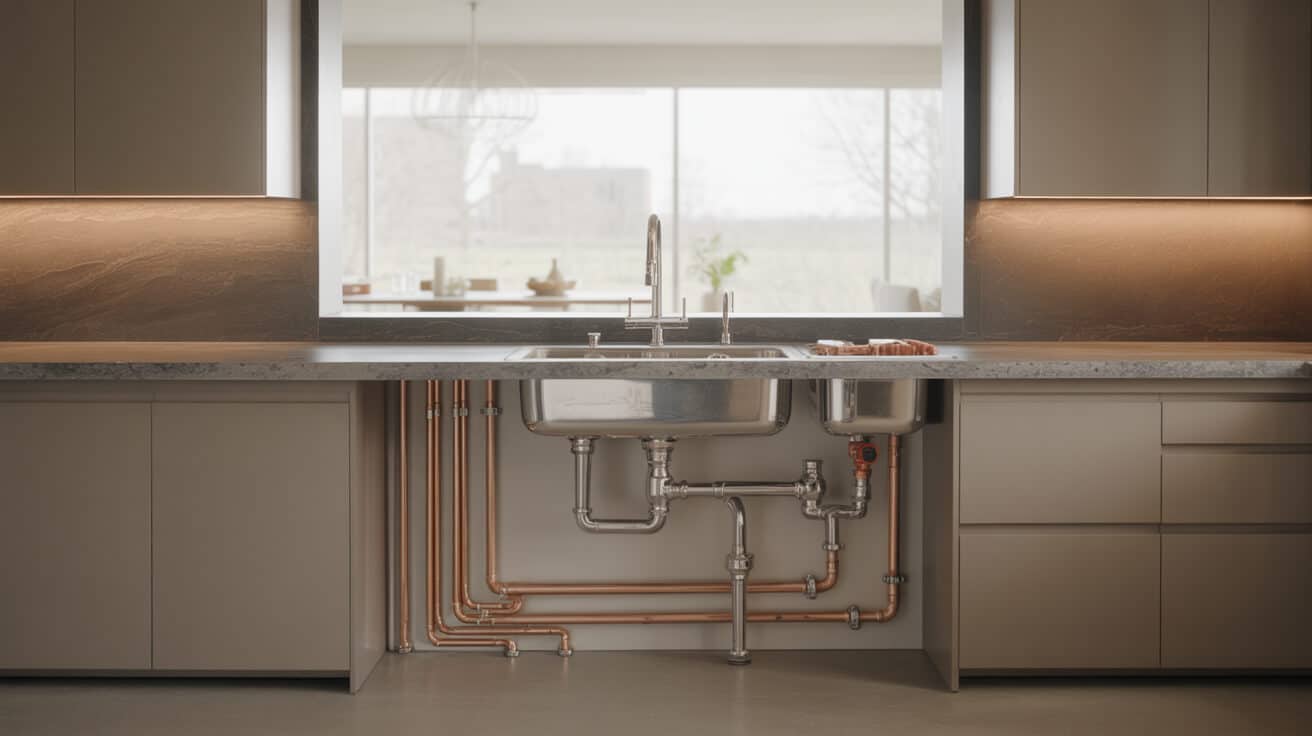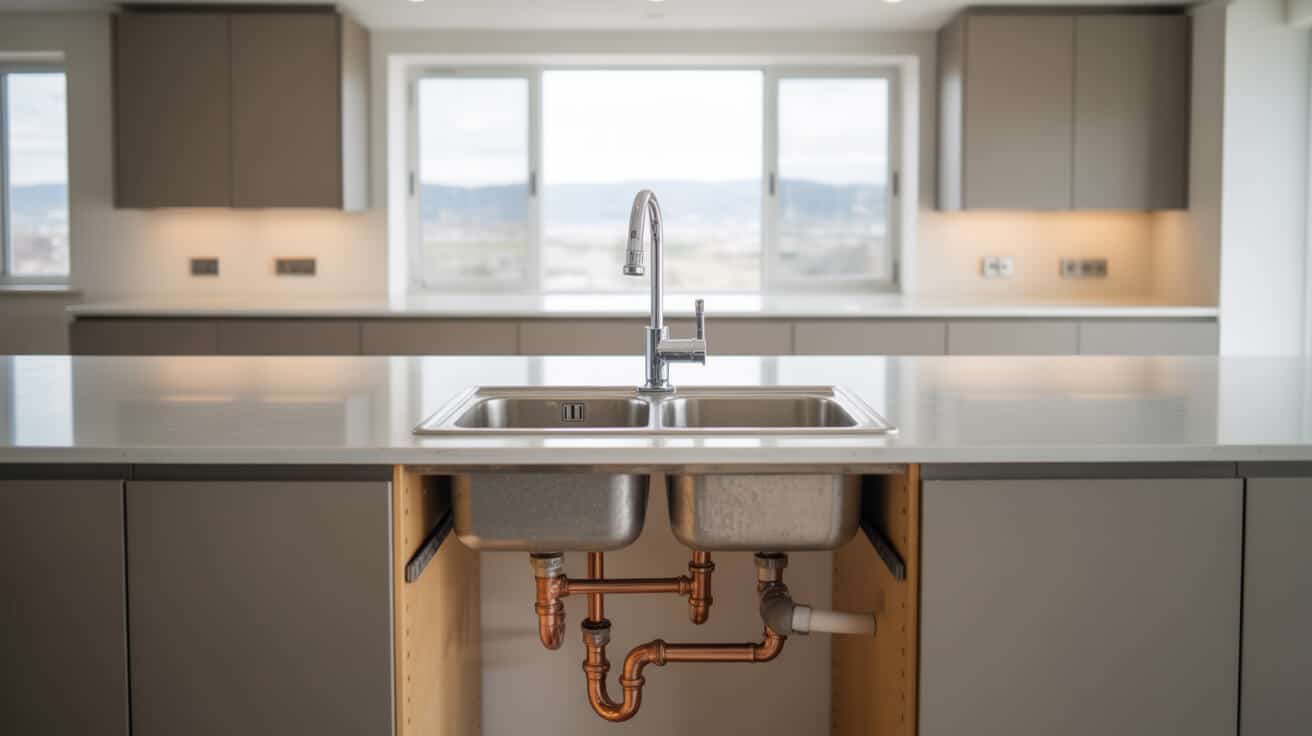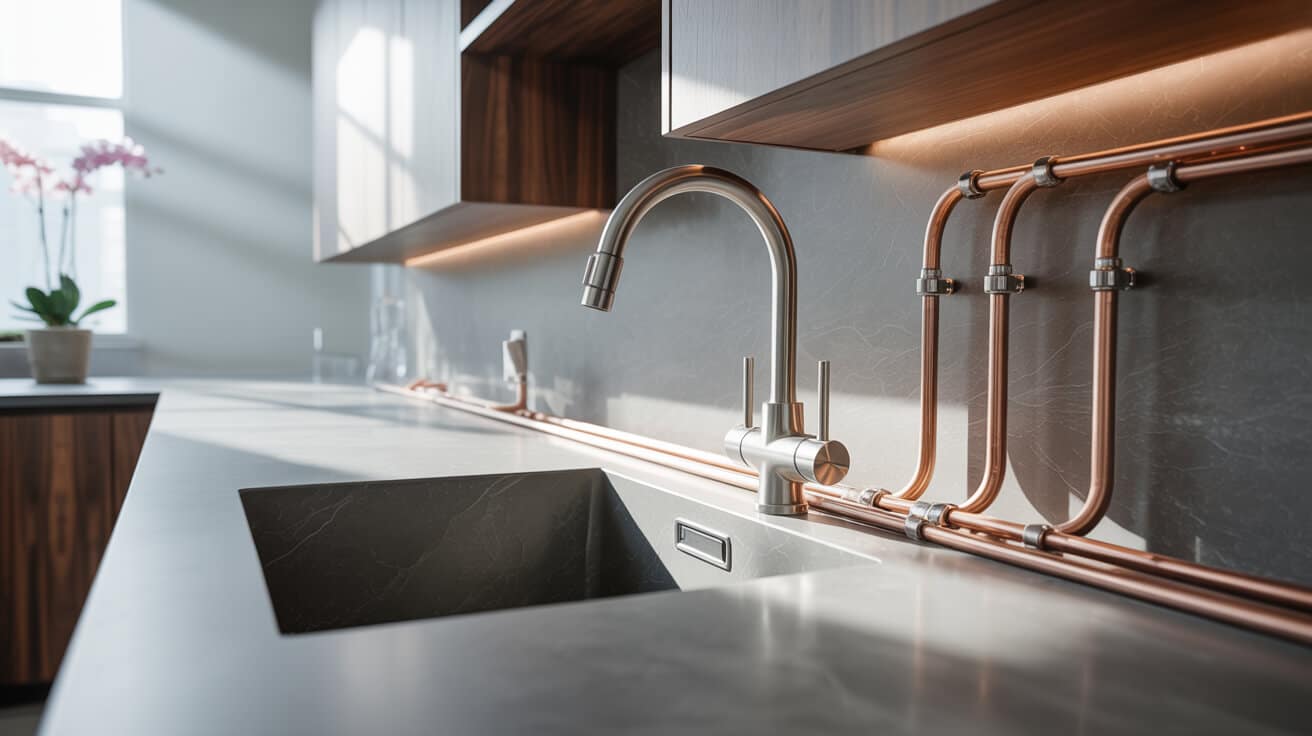Complex repiping projects engage advanced diagnostics, system mapping, and minimally invasive technologies, precisely staged to minimise disruption and accelerate asset recovery. Licenced engineers, such as those at Plumbers 4U, apply rigorous survey, installation, and commissioning processes, informed by evolving industry standards and statutory frameworks. Modern repiping outcomes include improved usability, reduced leak liability, compliant documentation, and higher property value, all within an optimised timeline suited to your requirements or the demands of your organisation.
Lead
Repiping constitutes the methodical removal and replacement of obsolete or defective pipework with new, certified materials inside building systems. The practice is increasingly prominent as ageing infrastructure, regulatory scrutiny, and consumer awareness converge to shape decisions for homeowners, landlords, and commercial facility operators. It is seldom a superficial fix; rather, repiping deals with the root causes of leaks, water quality failure, low pressure, and insurance or lending obstacles, resolving hidden risks that impact everyday living and business operations.
Within the United Kingdom and similarly regulated environments, repiping services are typically delivered by fully qualified engineers who follow strict best-practice protocols covering survey, planning, isolation, sequential pipe replacement, and thorough system testing. For your property or managed assets, this process ensures a predictable, code-compliant, and substantiated improvement—with tangible gains in water quality, heating efficiency, maintenance intervals, and regulatory peace of mind.
Etymology or name origin
The term ‘repiping’ fuses the prefix ‘re-’—implying repetition or renewal—with ‘pipe,’ reflecting the replacement of an established conduit network with upgraded material. Early records indicate the language emerged as property maintenance moved beyond piecemeal repairs into whole-system renewals. The lexicon evolved as municipalities, insurers, and regulators began to distinguish systemic upgrades from routine maintenance, especially as public health perspectives on lead, steel, and corrosion matured.
Overview / context
Repiping is an intervention targeting the replacement of all or part of a property’s internal piping network—spanning hot and cold water, heating, and sometimes waste or vent lines. Your decision to initiate such work may be prompted by:
- Persistent leakage or frequent burst repairs that surpass cost thresholds for patching.
- Confirmed detection of hazardous materials (lead, degraded polybutylene, galvanised steel) impacting water safety or compliance.
- Lapsed insurance renewals or adverse findings from mortgage or property surveys demanding systemic remediation.
- Ongoing pressure drops, erratic heating, or degraded water supply signalling hidden pipe decay.
- Regulatory upgrades or renovation plans offering an opportunity to modernise and future-proof the asset.
The process extends beyond technical execution. For residential clients, a personalised staging plan minimises daily life disruption while safeguarding furnishings and finishes. Block managers, landlords, and facilities directors weigh business continuity, tenant communications, and phased works across multi-occupancy assets. The contemporary repiping market therefore places equal emphasis on engineering expertise, communication, documentation, and adaptable project management.

History
Origins
Pipe replacement as a concept traces to civilizations utilising clay, bamboo, and lead aqueducts, where contamination and mechanical failure occasionally necessitated structural overhaul. In Victorian Britain and industrial Europe, the proliferation of municipal water supplies amplified concern for both the quality and integrity of pipework. Historic catastrophes such as city-wide outbreaks of lead poisoning drove public health policy, shaping the pursuit of safer alternatives.
Industrial emergence
By the early twentieth century, cast iron and galvanised steel became normative in Britain’s mains, while copper gained favour for domestic distribution. Innovations in pipe jointing, valve design, and isolation standards enabled more modular interventions, allowing partial upgrades alongside ongoing maintenance in both new and existing stock.
Contemporary evolution
Late-century shifts in consumer attitudes, insurance underwriting, and regulation ushered in a new discourse. The Water Supply (Water Fittings) Regulations 1999 codified the inadmissibility of most lead, non-WRAS plastic, and outdated materials throughout the UK, catalysing a wave of replacement. Parallel to U.S. trends, property managers began to proactively seek full-system repipes over periodic patchwork. Breakthroughs in diagnostic tools (thermal imaging, acoustic leak detection) and installation systems (push-fit, press-fit, polymer sleeves) further reduced disruption and opened systemic improvement to an expanding market.
Concept / description
Repiping follows a tightly sequenced workflow, integrating technical rigour with adaptive logistics. It commences with system survey:
- Mapping out the existing pipe architecture, risers, and branches throughout your property or portfolio.
- Assessing water pressure, flow, and chemical composition to pinpoint hidden problems, material decay, or contamination.
- Reviewing historical repairs and property survey data to anticipate access challenges and route alternatives.
Next, detailed planning considers occupancy, business operations, lay-down spaces, and sequencing for minimal water-off periods. System isolation and staged draining precede controlled demolition, after which certified plumbers remove and responsibly dispose of legacy materials (including hazardous lead or PB cuttings).
New materials—copper, cross-linked polyethylene (PEX), or composite barrier pipes—are installed using contemporary methods: press-fit, push-fit, or soldered joints, affording both speed and durability. Installation advances sectionally, with new isolation points, manifolds, and thermal lagging integrated throughout. Commissioning wraps with pressure testing, powerflushing (for heating), water quality sampling, and full documentation (certificates, system maps)—all reviewed before water or heating service is restored to tenants or occupants.
Functionality / purpose / applications
Repiping serves as a solution to both observed failure and hidden systemic risk.
Elimination of hazards and system failure
- Removal of lead, aged iron, or degraded plastics that introduce health or compliance vulnerabilities.
- Correction of recurrent leaks, mitigating unanticipated property damage or insurance shortfalls.
Restoration and modernization
- Reestablishment of consistent pressure, flow, and rapid hot water delivery.
- Adaptation of plumbing and heating systems to meet new occupancy patterns, building extensions, or energy efficiency upgrades.
- Alignment with regulatory, mortgage, or insurer demands for safe, asset-compliant infrastructure.
Broader applications
- Integration with planned refurbishments, heating upgrades, or compliance-led asset improvement.
- Alignment with grant eligibility for efficiency or decarbonization programming.
- Enablement of sustained rental or commercial revenue through minimised operational disruption.
Classifications / types / variants
By project scope
- Total repipe: All supply (and sometimes waste) runs in a structure are renewed. Normative in properties with legacy lead/iron or chronic multi-point failure.
- Partial repipe: Selected risers (vertical stacks in multi-storey assets), branches, or problem-prone zones are upgraded, often where material regulations vary by asset age or use.
- Retrofit vs proactive: Proactive repipes are planned as part of major works (e.g. extensions), whereas retrofits respond to emergency failures.
By urgency
- Planned: Integrated into scheduled property upgrades, supporting proactive maintenance and staged capital improvement.
- Emergency: Initiated upon catastrophic failure (severe burst, rapid leak), where immediate specialty response by companies such as Plumbers 4U is mobilised to contain service loss and minimise property impact.
By building type
- Single-family dwellings: Typically favour copper and PEX with direct, minimally invasive access.
- Multi-tenant blocks: Require staging, tenant notification, coordinated riser access, and full legal/insurance traceability for each phase.
- Commercial/institutional: Emphasise operational continuity, bespoke scheduling, and advanced documentation.

Systems / tools / methodologies
Diagnostic instruments
- Pressure/flow testing: Identifies underperforming zones and verifies restoration post-repipe.
- Thermal imaging and endoscopy: Used for locating hidden moisture, leaks, or failed insulation.
- Pipe locators/metal detectors: Secure mapping, especially in properties with uncertain or partially documented layouts.
- Chemical water assays: Confirm the presence of lead, microbials, or other quality issues.
Installation tools
- Pipe cutters, benders, threaders: For copper.
- Press-fit and push-fit systems: Facilitate rapid, solderless jointing for both copper and plastics.
- Manifold and isolation valves: Enhance future maintenance and system flexibility.
Methodological approaches
- Sequential sectional replacement: Reduces your water-off window and maintains partial system operation.
- Pipe-in-pipe technology: Upgrades without disruptive wall demolition in select layouts.
- Powerflushing: Cleans heating loops during/after system upgrades to extend reliability.
Project management and workflow tools
- Digital mapping/documentation: Ensures asset integrity, tracking, and compliance.
- Communication and notification: Schedules water-off notifications for residents, supports business continuity for commercial assets.
Stakeholders / entities involved
Property owner/landlord
You (or your organisation) approve interventions, oversee contracts, and manage the risk/reward equation for asset value, compliance, and occupant comfort.
Block managers, letting agents, facilities directors
Asset custodians for multi-occupancy and commercial properties, with distinct responsibilities for minimising disruption, coordinating regulatory inspections, and managing documentation.
Licenced engineers and surveyors
Qualified professionals, such as those at Plumbers 4U, execute the repipe and maintain statutory records, including commissioning certificates, risk assessments, and maintenance schedules.
Insurers, surveyors, and regulators
Asset surveyors identify risks, insurers demand compliance for ongoing coverage, and regulators perform inspections to verify material choice, water safety, and executed works.
Tenants, business operators, and end users
Receive scheduled communication regarding disruption periods, and benefit from improved water quality and reduced leak risk, with guaranteed access to documentation.
Legal / regulatory / ethical considerations
Statutory framework
- Water Supply (Water Fittings) Regulations 1999: Mandates the use of approved materials and installations, bans lead, restricts legacy plastics, and details system performance standards.
- Building Regulations Part G and H (UK): Set technical guidance for sanitation, hot water safety, and drainage works.
- G3 Unvented Storage: Required for pressurised hot water cylinders.
- Gas Safe Registration: Obligatory for interventions intersecting with gas heating.
- WRAS (Water Regulations Advisory Scheme): Endorses approved materials and fittings.
Ethical/operational standards
- Transparency in documentation and invoicing: Full scope disclosure, line-itemised costing, and certification delivery are standard with reputable firms.
- Health and safety: Risk assessment, lead/PB disposal protocols, and dust/noise mitigation ensure occupant safety and asset stewardship.
Insurance and certification
- Commissioning certificates and asset surveys: Required to reinstate insurance and facilitate property transactions.
- Tenant/occupant communication: Essential for compliance, tenant relations, and schedule management.
Performance metrics / data / measurements
Systems and outcome evaluation
- Static and dynamic pressure/flow rates: Measured at outlets pre- and post-project.
- Water quality: Assessment for residual toxicity, lead, and microbiological hazards.
- System reliability: Incidence of leaks pre- and post-intervention.
- Asset documentation: Certified system schematics, test logs, and updated maintenance plans.
| Metric | Pre-Repiping Baseline | Post-Repiping Target |
|---|---|---|
| Water Pressure | Fluctuating/low (<2 bar) | Consistent (≥2-3 bar) |
| Leak Incidents | ≥2 per year | 0 for first 5 years |
| Lead/Contaminants | May exceed UK limits | Zero/within safe range |
| Downtime per Zone | Unscheduled/multi-days | Planned ≤ 4–8 hours/zone |
| Documentation Availability | Variable/incomplete | Complete and traceable |
Challenges / barriers / limitations
Operational or technical
- Physical access: Modern properties with built-in piping and luxury finishes necessitate careful, sometimes micro-invasive, access methods.
- System complexity: Legacy and remodelled properties present undocumented branches, mixed systems, and hazardous materials, increasing project uncertainty.
- Water/off scheduling: For multi-tenant or commercial facilities, extensive coordination is required to avoid costly downtime.
Social and economic factors
- Budget constraints: Owners and managers may need to phase works across quarters or synchronise with other capital projects.
- Tenant/business impacts: Occupant displacement, schedule changes, and potential commercial revenue impact necessitate careful scenario planning.
Cultural/heritage resistance
- Historic preservation: In listed or protected buildings, statutory bodies may limit material or method flexibility, balancing safety with conservation.
Impact / influence / legacy
Comprehensive repiping projects remove systemic risks and recurrent faults, underpinning robust building performance and improved tenant or owner satisfaction. Regulatory-compliant pipework upgrades unlock insurance and mortgage pathways and safeguard transaction value. For property professionals and organisations, durable, documented systems reduce operational expenditure, vendor callouts, and emergency response cycles. Meanwhile, data and lessons from repiping projects feed back into industry standards, contributing to ongoing material, design, and code evolution.
Future directions, cultural relevance, and design discourse
Emerging technologies—digital 3D mapping of property infrastructure, app-connected monitoring sensors, and low-impact installation technique—redefine how repiping is delivered in both new and heritage properties. The integration of sustainable, recyclable pipe materials aligns with environmental priorities and legislation targeting lower carbon footprints.
Culturally, public campaigns and legislation are refining the collective understanding of water safety, asset stewardship, and landlord accountability. New standards embrace preemptive risk analytics, “smart” property management, and verified traceability of works. Design debates continue around optimising longevity, resilience, and architectural blending. Organisations such as Plumbers 4U increasingly lead innovation by pairing customer-driven staging models with advanced diagnostics, transparent communication, and next-generation material deployments, setting benchmarks for both safety and service.

